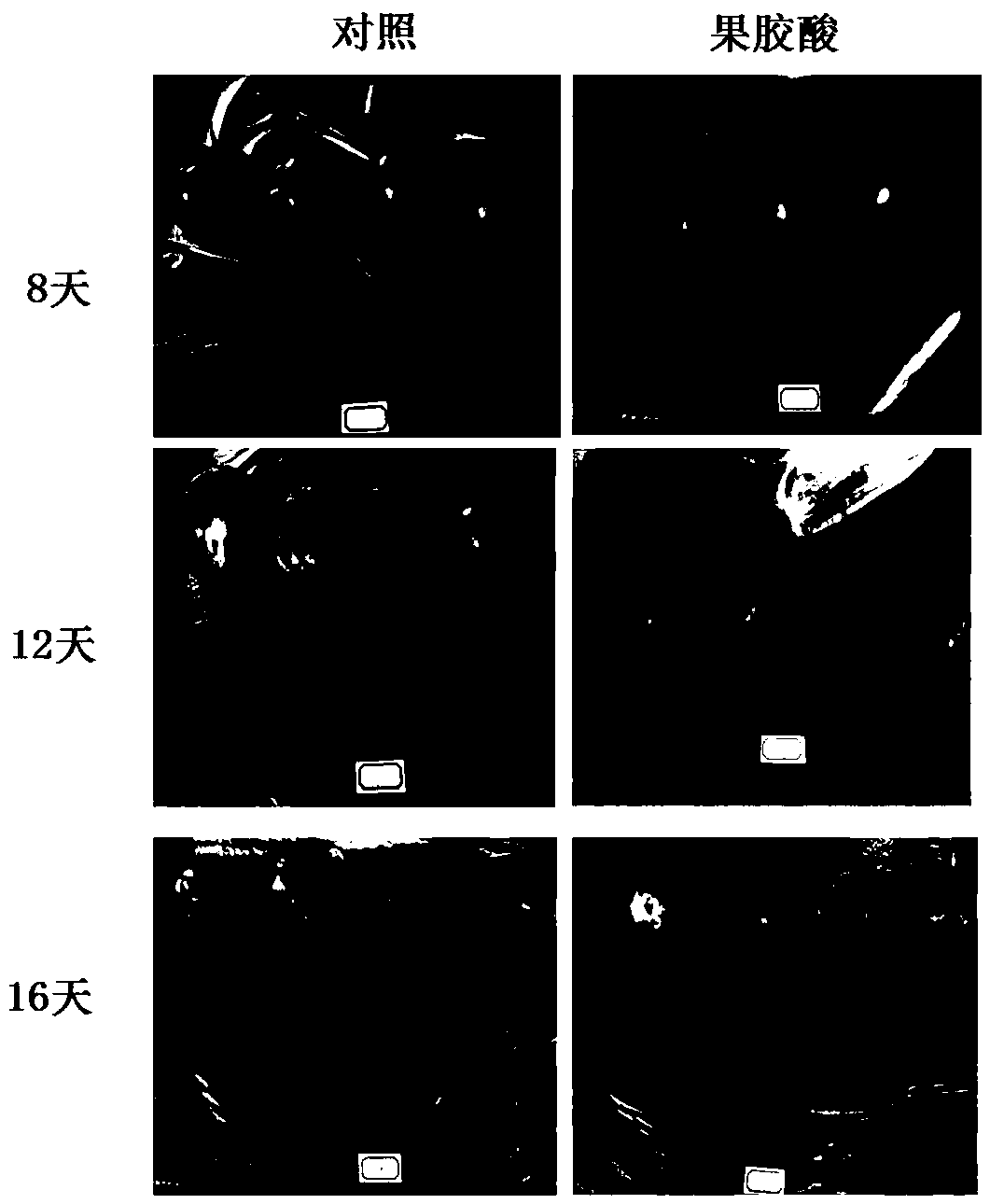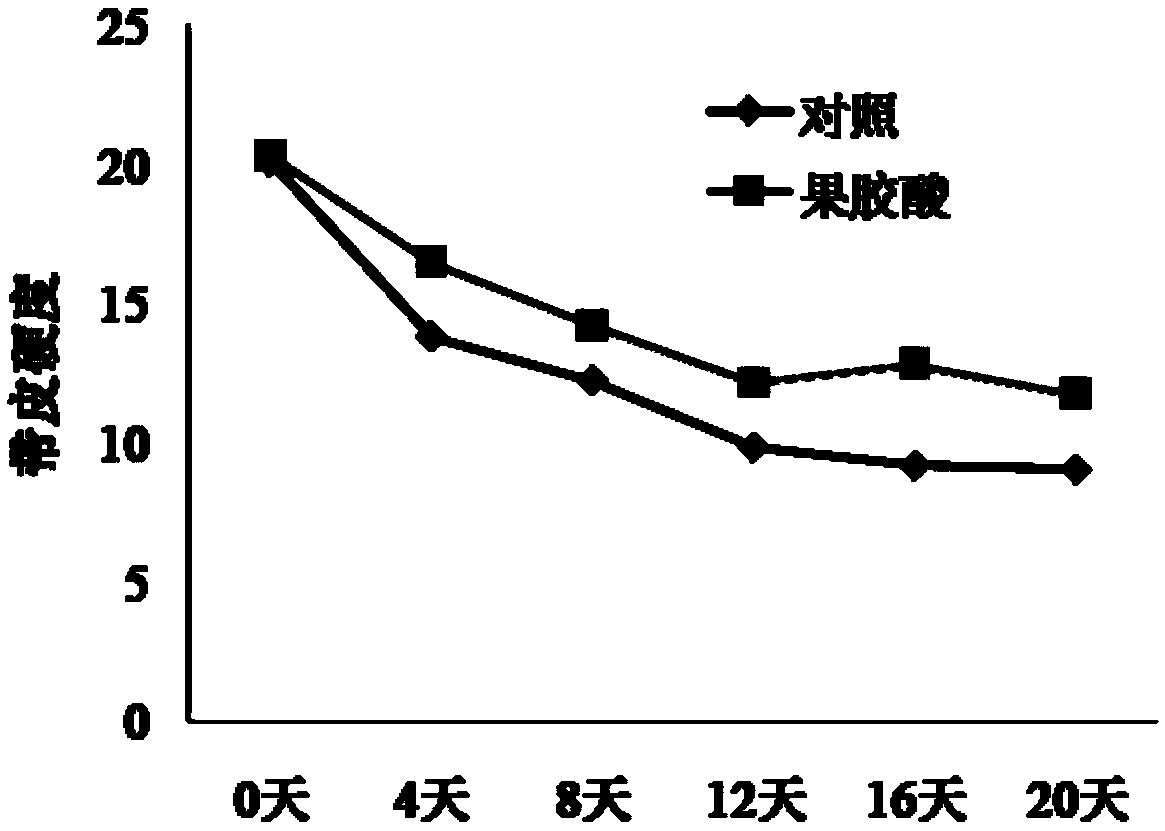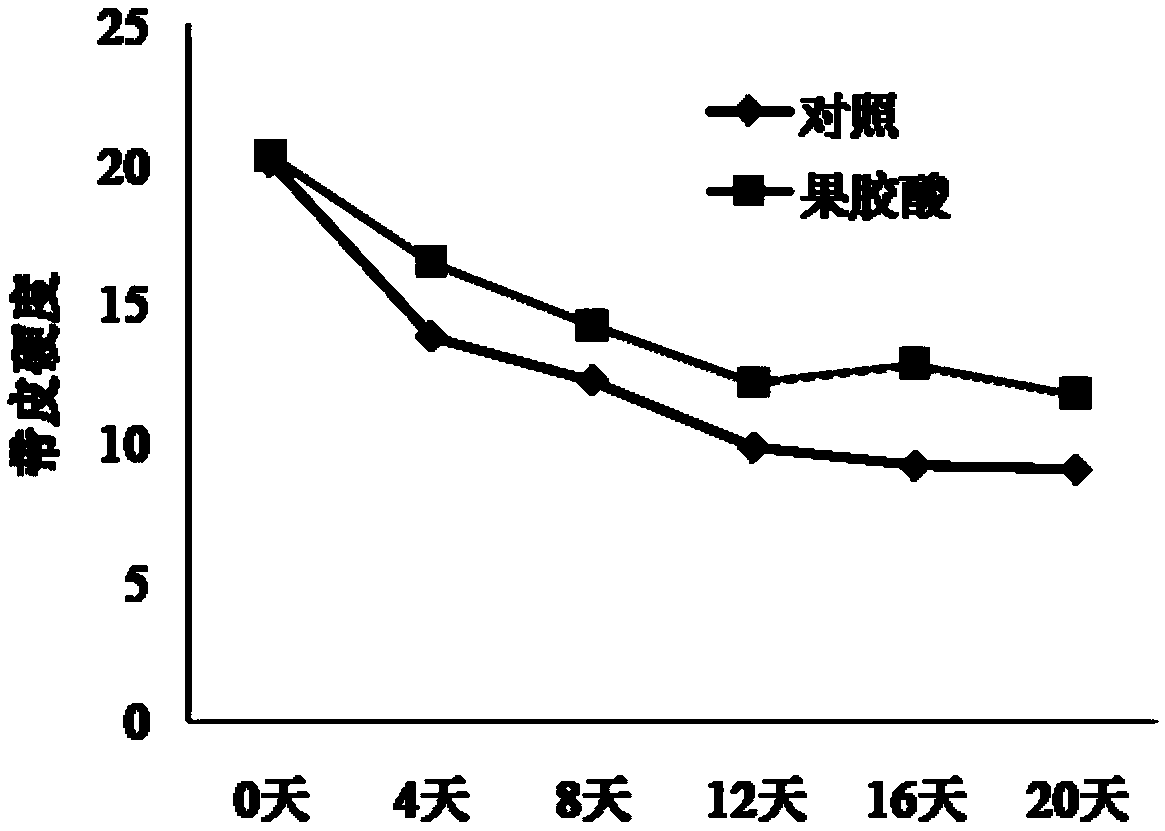Method for inhibiting softening of fruits after harvesting
A fruit and post-harvest technology, applied in the field of post-harvest softening and fresh-keeping of plant fruits, can solve problems such as environmental pollution, high energy consumption, and health hazards
- Summary
- Abstract
- Description
- Claims
- Application Information
AI Technical Summary
Problems solved by technology
Method used
Image
Examples
Embodiment 1
[0022] After dissolving the pectinic acid with ethanol, add water to prepare a 0.01wt% pectinic acid solution, soak the tomatoes in it for 7 minutes, remove it, air-dry it naturally, put it in a fresh-keeping bag, and place it in a storage room at 25°C; , 4, 8, 12, 16, and 20 days to measure fruit hardness, protopectin, cellulose content and rotten fruit rate, and use water as a control experiment, the results are detailed in Figure 1-4 .
Embodiment 2
[0024] After dissolving the pectinic acid with ethanol, add water to prepare a 1wt% pectinic acid solution, soak the tomato in it for 3 minutes, remove it, air-dry it naturally, put it in a fresh-keeping bag, and place it in a storage room at 25°C.
Embodiment 3
[0026] After dissolving the pectinic acid with ethanol, add water to prepare a 0.1wt% pectinic acid solution, soak the tomato in it for 5 minutes, remove it, air-dry it naturally, put it in a fresh-keeping bag, and place it in a storage room at 25°C.
PUM
 Login to View More
Login to View More Abstract
Description
Claims
Application Information
 Login to View More
Login to View More - R&D
- Intellectual Property
- Life Sciences
- Materials
- Tech Scout
- Unparalleled Data Quality
- Higher Quality Content
- 60% Fewer Hallucinations
Browse by: Latest US Patents, China's latest patents, Technical Efficacy Thesaurus, Application Domain, Technology Topic, Popular Technical Reports.
© 2025 PatSnap. All rights reserved.Legal|Privacy policy|Modern Slavery Act Transparency Statement|Sitemap|About US| Contact US: help@patsnap.com



